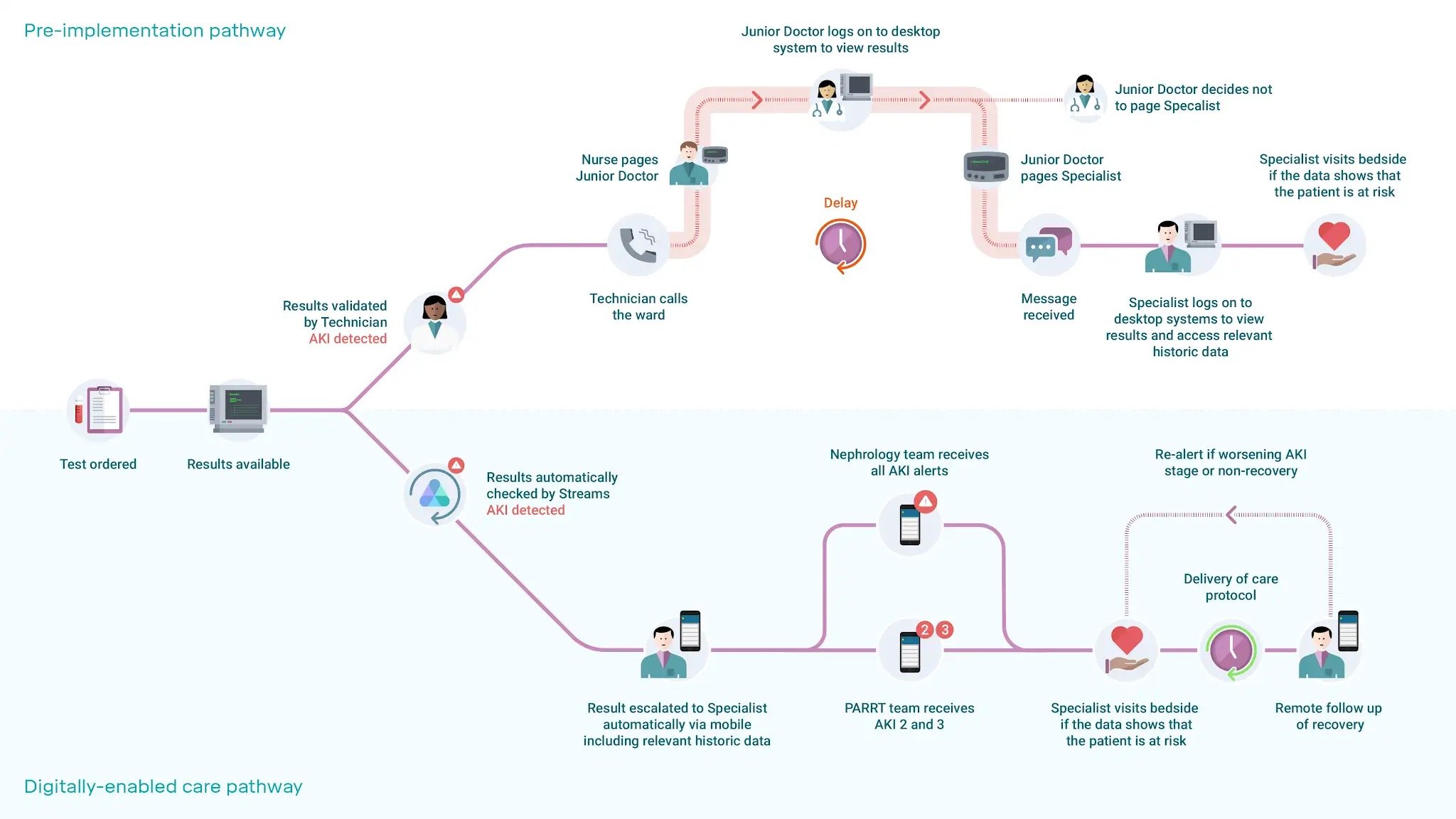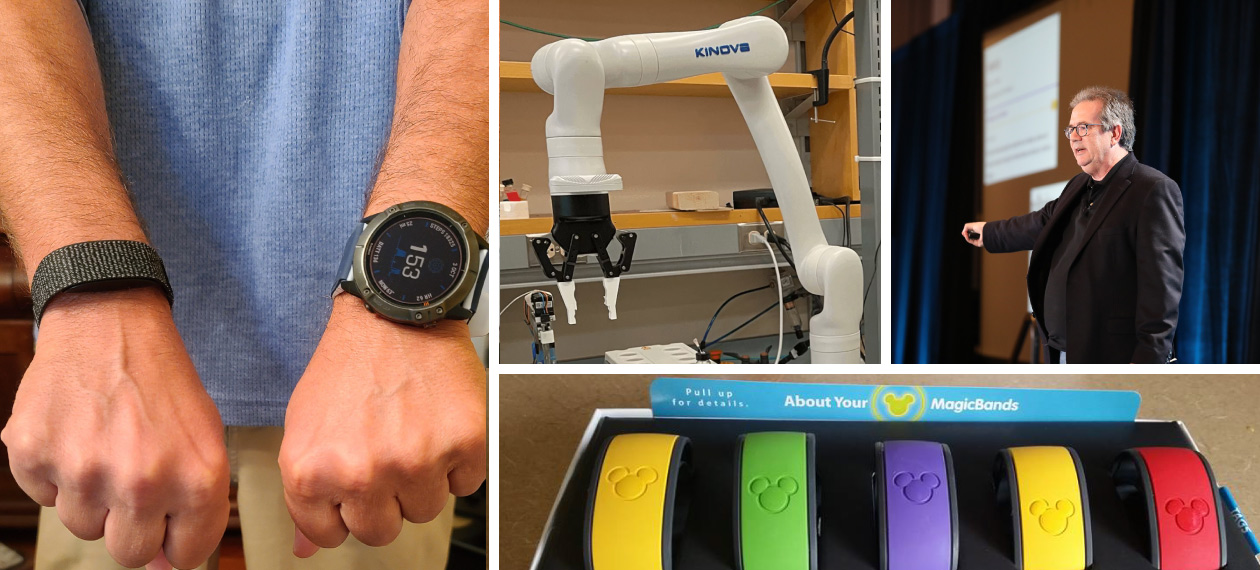Ron Galloway prefers the word reflexivity to the word sentience. Whereas sentience is a big hard SAT word, as he sees it, reflexivity is “badass.” It evokes Hamlet, Don Quixote, Daffy Duck, all seminal characters who saw through the veil of their own reality, becoming aware that they were characters. It’s with them in mind that Galloway thinks about artificial intelligence and its implications for the healthcare industry: maybe a little freaky, but ultimately pretty badass.
In a recent talk at HealthSpaces, Galloway explained how AI has already begun to transform healthcare and how it will redefine the industry’s future.
A World of Possibilities
The use of AI in large, complex organizations like hospitals is hardly unprecedented. As Galloway demonstrated, AI is already all around us. Walmart, for instance, uses it in multiple capacities: to predict demand, to make substitutions in online orders, and even to spot too-ripe bananas that need to be replaced.
Disney World, meanwhile, uses the sensors in customers’ Magic Bands to identify their preferences and design future vacations accordingly. The wealth of data collected by personal devices like smartphones and Apple Watches – blood oxygen levels, heart rates, sleep schedules, gait analysis, menstrual cycles – speaks to the possibilities available to healthcare institutions that figure out how to leverage that data at scale.
That’s not to say AI’s potential is limited solely to those healthcare delivery services. “Why couldn't an AI inside a hospital facility look at the weather and go, ‘You know what? We're about to go through a hot streak, I should buy some call options on electrical futures’?” Galloway said. “If you're running a hospital that has buses or cars to go get patients, this network will generate when they need to go get these people, given prevailing weather and traffic patterns.”
The Three-Body Problem
When AI does take over patient functions, Galloway predicted, it will help the healthcare industry address one of its current challenges: what’s known in physics as the three-body problem. “When you have two bodies orbiting each other, you can pretty much tell where they are because there's only two of them,” he explained. “By knowing the position of A, you know where B is. But the three-body problem is when you throw an extra body into that and everything becomes super unpredictable… If you have C, you might really not know where B is. And it just takes one extra body to make that happen.”
As Galloway sees it, “A” and “B” are patients and existing medical institutions. “C” came along in the form of big data, adding a whole new layer of complexity and expense to healthcare operations. (The hospital where his father used to work, he said, cost the equivalent of $75 million to build; the EHR system it recently installed cost $85 million.) Fortunately, AI will give hospitals the tools they need not only to make sense of that complexity, but to leverage it more effectively in the services they deliver.
Finding New Solutions
While Galloway expects it will be a few years before AI takes over patient functions, the industry has already made use of large-scale machine learning for electronic healthcare records. One recent study found that AI could use EHR to predict inpatient mortality with 95 percent confidence and 30-day readmission with 75 percent confidence.
When Google applied its DeepMind AI program to the National Health Service’s Acute Kidney Injury detection algorithm in the U.K., it found that DeepMind “could accurately predict AKI in patients up to 48 hours earlier than it is currently diagnosed,” opening a valuable window to deliver care. Other studies have found that AI can diagnose breast cancer from mammogram data with 95 percent accuracy.

But perhaps the days of machines delivering care aren’t so far off after all, Galloway continued. In Mexico, the startup Roomie used an autonomous robot to help identify high-risk COVID patients, using Intel technology to take temperatures, blood oxygen levels, and medical histories. There are even more serious diagnostic applications already in use.
“There's a machine now that a patient could go into an ER and put his arm under this big bar, and it would basically diagnose the wound he has based on lots of other things it's learned earlier,” he said. “You can get your retinal fundus scanned and see whether or not you're going to have a heart attack in the next three years, based upon an AI's algorithm.”
Whenever we finally enter the true age of AI, Galloway encourages the healthcare industry to embrace it as something to collaborate with and learn from – something that the industry can use to transform itself for the better.
“That's what I'm hoping happens with all this AI that is going to be omnipresent in our hospitals,” he concluded. “It won't solve our problems for us, but it'll help us find solutions that we never, ever would have thought of.”

Posted by
Collaborate with your Peers!
HealthSpaces is a community for people that plan, design, build and operate spaces where healthcare is delivered.
June 7-9, 2026 | Braselton, GA
Learn More




-4.png)
-Dec-09-2025-05-48-44-4379-PM.png)
-4.png)
-1.png)
-2.png)

Comments